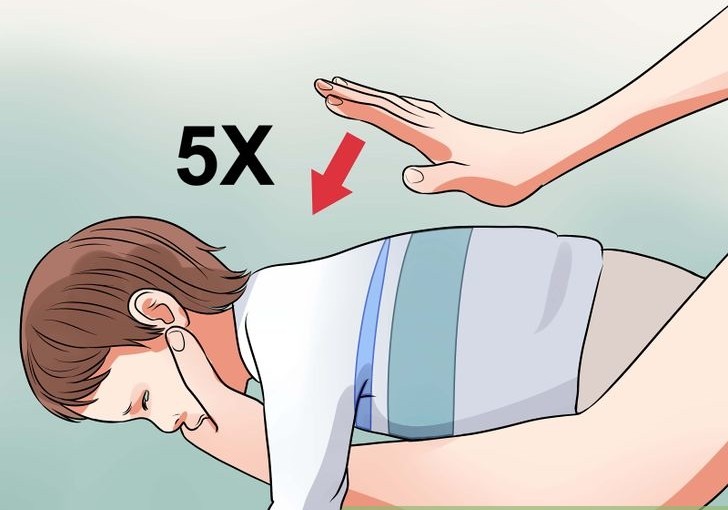Abdominal thrusts (also called the Heimlich maneuver) is a first aid procedure used to treat upper airway obstructions (or choking) by foreign objects. The term Heimlich maneuver is named after Dr. Henry Heimlich, who first described it in 1974.
Goal: Remove a foreign body from obstructing the airway to prevent anoxia and cardiopulmonary arrest.
Conscious Child or Adult (Heimlich Maneuver)
1. The patient will be standing or sitting. Stand behind the patient. Wrap your arms around patient’s waist. Make a
fist with one hand. Place thumb side of fist against patient’s abdomen, above the navel but below the xiphoid process.
2. Grasp fist with other hand. Press fist into abdomen with a quick upward thrust.
3. Repeat distinct separate thrusts until the patient expels the foreign body or becomes unconscious.
CLICK HERE for more resources on Fundamentals of Nursing
Unconscious Patient (Heimlich Maneuver, Abdominal Thrust)
1. Patient will be lying on the ground. Turn patient on back and call for help. Activate emergency response system.
2. Finger sweep:
a. Use tongue–jaw lift to open mouth.
b. Insert index finger inside cheek and sweep to base of tongue if an object is visible. Use a hooking motion, if possible, to dislodge and remove the foreign body. (Note: Avoid finger sweeps in infants and children because you can easily push the foreign body further into the airway. Remove only if clearly visible and easy to reach.)
c. If there is no effective breathing, attempt to provide two rescue breaths. If unsuccessful, reposition and try to ventilate again.
3. Straddle patient’s thighs or kneel to the side of thighs. Place heel of one hand on epigastric area, midline above the navel but below the xiphoid process. Place second hand on top of first hand.
4. Press heel of hand into abdomen with a quick upward thrust. (Note: Be careful to thrust in the midline to prevent injury to the liver or spleen.)
5. Repeat abdominal thrusts five times. If airway is still obstructed, attempt to ventilate using mouth-to-mouth respiration and head tilt/chin lift. Repeat steps 5 through 8 until successful.
CLICK HERE for resources on Nursing Procedure
Children Younger Than 1 Year of Age (Back Blows and Chest Thrusts)
1. Straddle infant over your arm with head lower than trunk.
2. Support head by holding jaw firmly in your hand.
3. Rest your forearm on your thigh and deliver five back blows with the heel of your hand between the infant’s scapula.
4. Place free hand on infant’s back and support neck while turning to supine position.
5. Place two fingers over sternum in same location as for external chest compression (one finger width below nipple line).
6. Administer five chest thrusts.
7. Repeat steps 1 through 6 until airway is not obstructed.
Children Older Than 1 Year of Age
1. Perform Heimlich maneuver with child standing, sitting, or lying as for adult, but more gently.
2. You may need to kneel behind child or have child stand ona table.
3. Prevent foreign body airway obstruction in infants and children by teaching parents or caregivers to do the following:
a. Restrict children from walking, running, or playing with food or foreign objects in their mouths.
b. Keep small objects (e.g., marbles, beads, beans, thumb tacks) away from children younger than 3 years of age.
c. Avoid feeding popcorn and peanuts to children younger than 3 years of age, and cut other foods into small pieces.
4. Instruct parents and caregivers in the management of foreign body airway obstruction.
Pregnant Women or Very Obese Adults (Chest Thrusts)
1. Stand behind patient.
2. Bring your arms under patient’s armpits and around chest.
3. Make a fist and place thumb side against middle of sternum.
4. Grasp fist with other hand and deliver a quick backward thrust.
5. Repeat thrusts until airway is cleared.
6. Chest thrusts may be performed with patient supine and hands positioned with heel over lower half of sternum (as for cardiac compression). Administer separate downward thrusts until airway is clear.
7. Document procedure.
CLICK HERE for more resources on Fundamentals of Nursing
CLICK HERE for resources on Nursing Procedure

